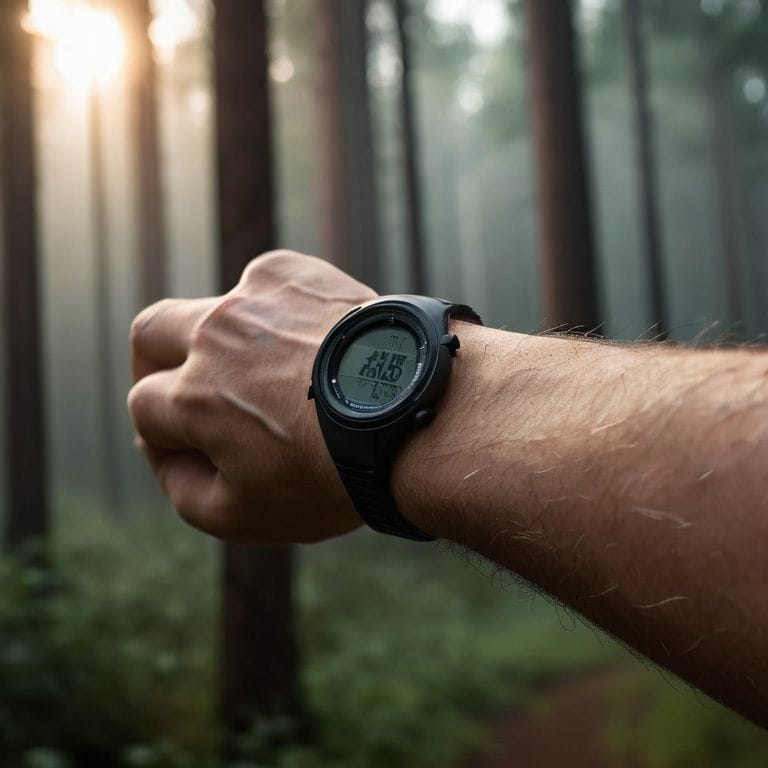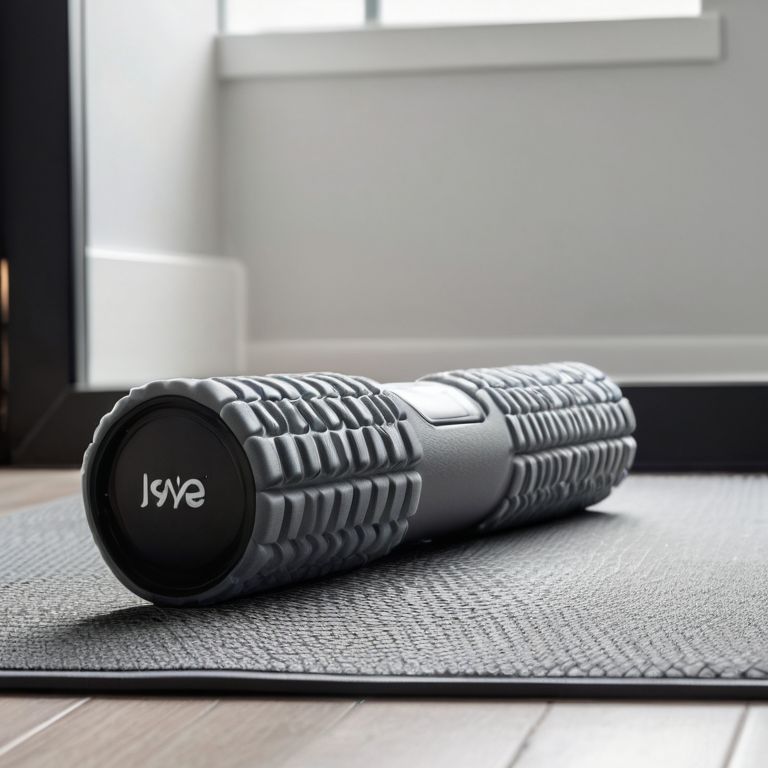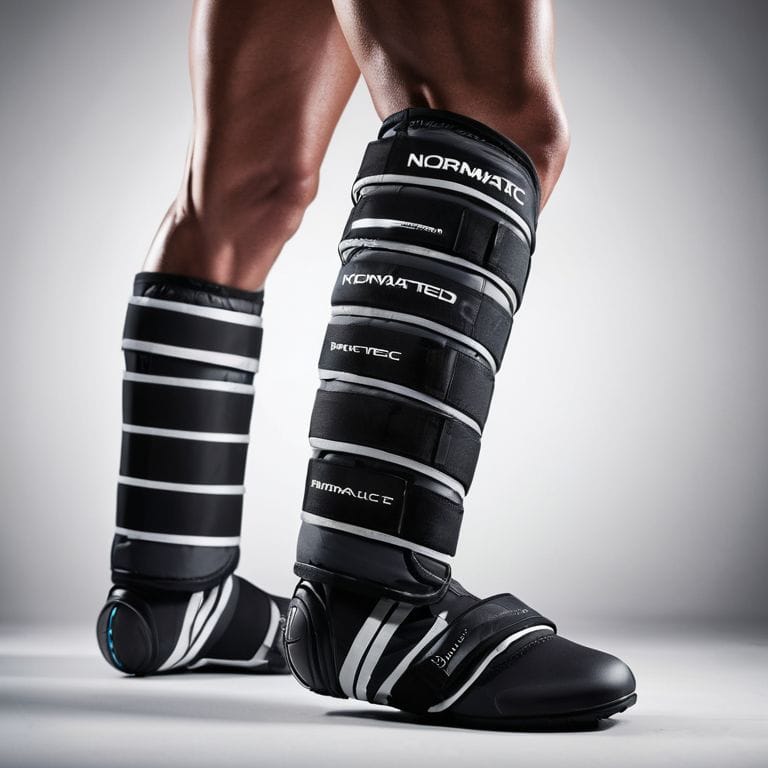I still remember my first marathon, where I was obsessed with tracking every detail of my run, from heart rate to pace. But one thing that always seemed elusive was understanding my actual power output – what is a running power meter, anyway? It wasn’t until I stumbled upon a running power meter that I realized the game-changing potential of this technology. This device measures the power output of a runner, providing a more accurate picture of their performance than traditional metrics like pace or distance alone.
As someone who’s passionate about demystifying health data, I’m excited to share my experience with running power meters and cut through the hype. In this article, I’ll provide a no-nonsense guide to understanding what a running power meter is, how it works, and how you can use it to take your training to the next level. I’ll draw from my own experience as a runner and a wearable tech reviewer to give you the lowdown on the benefits and limitations of these devices, and help you make an informed decision about whether a running power meter is right for you.
Table of Contents
Unlock Your Potential

As I delve into the world of running power meters, I’m excited to share how these tools can unlock your full potential. By providing real-time feedback on your power output, you can optimize your training and make data-driven decisions to improve your performance. I’ve seen firsthand the benefits of running with power, from increased efficiency to enhanced endurance.
One of the key advantages of using a running power meter is the ability to calibrate your training with precision. By understanding your power output, you can tailor your workouts to specific goals, such as increasing your lactate threshold or improving your running economy. For example, the Coros watch running dynamics feature provides valuable insights into your running technique, allowing you to make adjustments and become a more efficient runner.
To get the most out of your running power meter, it’s essential to understand power-based running training principles. This involves using your power data to inform your training decisions, such as when to push yourself and when to recover. By leveraging this data, you can create a personalized training plan that helps you achieve your goals and reach new heights in your running journey. Whether you’re using a Stryd power meter or another device, the key is to use the data to fuel your progress and stay motivated.
Benefits of Power Based Running Training
When I’m out on a run, I love seeing the impact of power-based training on my performance. It’s amazing how having real-time data on my power output can help me optimize my stride and boost my endurance. By using a running power meter, I can identify areas where I need to improve and make adjustments on the fly.
One of the biggest advantages of power-based running training is that it allows for more precise and personalized coaching. With a running power meter, my clients can get instant feedback on their performance, helping them to adjust their technique and reach their goals faster.
What Is a Running Power Meter
As a runner, I’ve always been fascinated by the idea of optimizing my performance. A running power meter is a device that helps me do just that, by measuring the power output of my runs. It’s a game-changer for anyone looking to take their training to the next level.
I’ve found that using a running power meter has helped me develop a more nuanced understanding of my running style, allowing me to make targeted adjustments and improvements. By tracking my power output, I can identify areas where I need to focus my training, and make data-driven decisions to achieve my goals.
Train Smarter Not Harder

To take your training to the next level, it’s essential to train smarter, not harder. This is where a running power meter comes into play, providing you with precise data on your power output. By utilizing this data, you can create a more efficient training plan, focusing on optimal intensity and reducing the risk of injury. For instance, I’ve seen significant improvements in my own marathon training by incorporating power-based running training and using tools like the Coros watch running dynamics to fine-tune my strategy.
When using a running power meter, calibration is key to ensuring accurate readings. It’s crucial to understand how to properly calibrate your device to get the most out of your training. By doing so, you can unlock the full potential of power-based running training and experience the benefits of running with power, such as improved pacing and increased efficiency. I’ve found that taking the time to calibrate my Stryd power meter has been a game-changer in my training, allowing me to make data-driven decisions and push myself to new heights.
By leveraging the data from your running power meter, you can gain a deeper understanding of your running dynamics and make informed decisions about your training. Whether you’re a seasoned athlete or just starting out, power-based running training can help you achieve your goals and take your performance to new levels. By combining this approach with the right tools and technology, such as a running power meter comparison, you can create a personalized training plan that helps you reach your full potential and crush your fitness goals.
Maximizing Performance With Stryd Power Meter
As a runner, I’m always on the lookout for tools that can help me take my training to the next level. That’s why I’m excited to share my experience with the Stryd Power Meter, which has been a game-changer for my own runs. This device provides accurate and reliable data on my power output, allowing me to fine-tune my training and make adjustments on the fly.
By using the Stryd Power Meter, I’ve been able to optimize my pacing and push myself to new heights. The device provides real-time feedback on my performance, enabling me to make adjustments and stay on track to reach my goals.
Running Power Meter Calibration Made Easy
To get the most out of your running power meter, calibration is key. I’ve found that proper calibration can make all the difference in getting accurate readings. It’s not as complicated as it sounds, and most devices come with straightforward instructions to get you started.
By following a few simple steps, you can ensure your running power meter is accurately tracking your power output. This includes making sure your device is synced with your foot pod or other accessories, and taking the time to run through the calibration process.
5 Key Takeaways to Unlock Your Running Power
- Understand that a running power meter measures your power output in watts, giving you a precise picture of your running efficiency and intensity
- Choose a running power meter that integrates with your existing wearable devices and training platforms for seamless data tracking and analysis
- Calibrate your running power meter regularly to ensure accuracy and reliable data, which is crucial for informed training decisions
- Focus on using your running power meter to set realistic targets and pace yourself during runs, rather than relying solely on heart rate or pace
- Analyze your running power meter data to identify areas for improvement, such as cadence, stride length, and foot strike, and adjust your training accordingly to optimize performance
Key Takeaways to Boost Your Run
I’ve found that using a running power meter can revolutionize your training by providing a more accurate measure of your performance than traditional pace or heart rate monitors alone
By leveraging the benefits of power-based running training, you can unlock your full potential and achieve new personal bests, whether you’re a seasoned marathon runner or just starting out
Remember, the right running power meter – like the Stryd Power Meter – can be a game-changer, offering easy calibration and actionable data to help you train smarter, not harder, and crush your fitness goals
Unlocking Your True Potential
A running power meter is not just a device – it’s your personal running coach, tracking every stride, every step, and every ounce of power you unleash on the road, giving you the insights you need to shatter your limits and redefine your boundaries.
Leo "Max" Maxwell
Unlocking Your Full Potential with Running Power Meters

As we’ve explored the world of running power meters, it’s clear that these devices can be a game-changer for runners looking to take their training to the next level. From understanding what a running power meter is, to the benefits of power-based running training, and finally to the ease of calibration and maximizing performance with tools like the Stryd Power Meter, the key takeaway is that data-driven training can lead to more efficient, effective, and enjoyable runs. By leveraging the insights provided by running power meters, runners can optimize their workouts, reduce the risk of injury, and achieve their goals faster.
So, as you consider integrating a running power meter into your training regimen, remember that the ultimate goal is not just to collect data, but to unlock your full potential as a runner. With the right mindset and the right tools, you can transform your runs and experience the thrill of achieving new personal bests. Whether you’re a seasoned marathon runner or just starting out, the power to elevate your performance is literally at your fingertips – or rather, on your wrist.
Frequently Asked Questions
How does a running power meter differ from a traditional pace or distance tracker?
A running power meter differs from traditional pace or distance trackers by measuring your actual power output, not just speed or distance. It’s like having a personal coach tracking your every stride, providing a more accurate picture of your performance and helping you optimize your training for maximum results.
Can a running power meter be used by runners of all levels, or is it primarily for elite athletes?
Absolutely, runners of all levels can benefit from a running power meter. Whether you’re a beginner or an elite athlete, it provides valuable insights to optimize your training, helping you set realistic goals and track progress. I’ve seen it transform the training of my clients, from casual joggers to marathon runners, by giving them a more accurate measure of their effort and performance.
What are some common metrics or data points that a running power meter tracks, and how can I use this information to improve my runs?
I love diving into data, and a running power meter tracks key metrics like wattage, cadence, and stride length. These insights help you optimize your form, pace, and endurance. By analyzing your power output, you can identify areas for improvement and make targeted adjustments to boost your performance and crush your goals.









